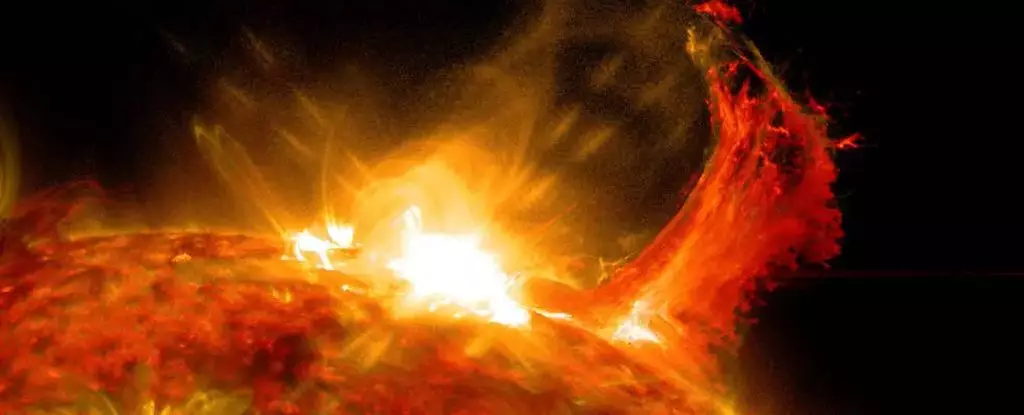At first glance, the Sun appears as an immutable entity, bathing our planet in consistent light and warmth. However, upon closer inspection, this stellar body is in a perpetual state of flux. It consists of a volatile mass of plasma, a highly charged gas that is engaged in a constant interplay with its own magnetic field. This dynamic nature signifies a myriad of unpredictable phenomena that pose ongoing challenges for solar physicists worldwide. One such challenge is accurately forecasting solar events, particularly those associated with coronal mass ejections (CMEs), which can have far-reaching consequences for Earth’s technological infrastructure.
CMEs are colossal bursts of plasma expelled from the Sun’s corona, spurred by disturbances in its magnetic field. These eruptions can release enormous quantities of energy and are often linked to solar flares—explosive events marked by sudden realignment of magnetic field lines. Traveling at astounding speeds, sometimes reaching thousands of kilometers per second, CMEs can make their way to Earth within a matter of days, depending on their trajectory. When they reach our planet, these phenomena can trigger geomagnetic storms, resulting in disruptions of satellite communications, GPS systems, and electrical grids. In addition to technological disruption, CMEs are also responsible for spectacular auroral displays, enchanting sky watchers across the globe.
The predictive complexities surrounding CMEs have long posed a dilemma for astronomers. Traditional forecasting methods have struggled to keep pace with the sheer volume of data generated by solar activity. However, recent advancements in artificial intelligence, particularly machine learning, present a promising avenue for enhancing forecast accuracy. A pivotal study led by astronomer Sabrina Guastavino from the University of Genoa illustrates just this potential. By applying machine learning to historical solar data, the research team sought to identify patterns that could predict future CME events and associated solar flares.
The research team focused their efforts on the solar events that occurred in May 2024, particularly in connection to region AR13664, which displayed significant activity leading up to intense solar storms. Utilizing sophisticated AI algorithms, the team processed extensive datasets to reveal intricate patterns that would have otherwise gone unnoticed by more conventional methods. Their findings were remarkable; the machine learning system not only predicted the occurrence of solar flares with unprecedented accuracy but also significantly reduced uncertainties commonly associated with traditional forecasting methods.
The results from the study indicated an impressive predictive capability regarding the travel times of CMEs to Earth and the onset of geomagnetic storms. Such advancements have the potential to transform how we prepare for solar activity, allowing for timely warnings that could mitigate the detrimental impacts of these powerful solar events.
The implications of integrating machine learning into the realm of solar activity forecasting are profound. As dependence on satellite technology and electrical grids continues to grow, accurate predictions of CMEs become increasingly crucial. By employing AI algorithms to forecast these solar phenomena, industries could develop more robust strategies to protect their investments and infrastructure. Additionally, for amateur astronomers and aurora enthusiasts, more reliable predictions could enhance the excitement and anticipation surrounding celestial events.
The marriage of artificial intelligence and solar physics not only enhances our understanding of the Sun but also equips humanity with vital tools for navigating its unpredictable consequences. As researchers continue to refine these technologies, we may find ourselves better prepared for whatever activities our star chooses to unleash. The future of solar forecasting looks brighter than ever, thanks to the innovative application of machine learning.


Leave a Reply